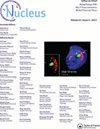一些橡胶树无性系用于木材生产的性能评价
IF 4.5
3区 生物学
Q3 CELL BIOLOGY
引用次数: 0
摘要
橡胶树最初是在巴西本文章由计算机程序翻译,如有差异,请以英文原文为准。
AVALIAÇÃO DO DESEMPENHO DE ALGUNS CLONES DE SERINGUEIRA PARA PRODUÇÃO DE MADEIRA
The rubber tree was originally introduced in the State of São Paulo, Brazil, with a view to exploiting natural latex as the main source of income. However, there are some alternatives that may be viable for properties looking to diversify agricultural production. In some Asian countries, timber extraction, seed production for vegetable oil extraction and honey production have been commercially exploited. The exploration of wood has been the most important alternative, extracted when the productive period of the trees ends (25 - 30 years). Rubber tree wood can be used in the furniture industry and in the manufacture of doors, windows and other household items. At the end of their productive life, when it is necessary to replant the area, as the exploitation of latex is no longer viable, the trees have a circumference of 100 - 110 cm (at 125 cm above the ground), being suitable for cutting approximately 300 to 400 trees/ha, with a production of 1 m3 of wood/tree. However, there are some peculiarities in rubber tree wood that should be known. The main objective of this work was to evaluate the wood productive potential of rubber tree clones, as well as the relationship between the rootstocks and the clones in characteristics such as total height, marketable height, DBH (diameter at breast height) and marketable volume of wood. The experiment was carried out at APTA Regional in Pindorama, State of São Paulo, Brazil and the experimental design used was randomized blocks with split plots, with 6 treatments (rootstocks), 6 subtreatments (clones), four replications and 20 plants/plot, with 6 plants useful. The results show that the clone PB 235 is the best for the characteristic total height and commercial height and that the rootstocks RRIM 701, GT-1, PB235 and IAN 873 are the best for the characteristic total height. There was interaction between the different clones and rootstocks tested in terms of total height. Clones PB 235, RRIM 600 and PR 107 are the best for the DAP trait. The rootstocks PB 235, GT-1, IAN 873 and RRIM 701 are the best for the DAP characteristic. Keywords: Hevea brasiliensis. Diameter. Height.
求助全文
通过发布文献求助,成功后即可免费获取论文全文。
去求助
来源期刊

Nucleus
CELL BIOLOGY-
CiteScore
5.60
自引率
5.40%
发文量
16
审稿时长
13 weeks
期刊介绍:
Nucleus is a fully open access peer-reviewed journal. All articles will (if accepted) be available for anyone to read anywhere, at any time immediately on publication.
Aims & Scope: The eukaryotic cell nucleus is more than a storage organelle for genomic DNA. It is involved in critical steps of cell signaling and gene regulation, as well as the maintenance of genome stability, including DNA replication and DNA damage repair. These activities heavily depend on the spatial and temporal “functional” organization of the nucleus and its integration into the complex meshwork of cellular scaffolding.
Nucleus provides a platform for presenting and discussing cutting-edge research on all aspects of biology of the cell nucleus. It brings together a multidisciplinary community of scientists working in the areas of:
• Nuclear structure and dynamics
• Subnuclear organelles
• Chromatin organization
• Nuclear transport
• DNA replication and DNA damage repair
• Gene expression and RNA processing
• Nucleus in signaling and development
Nucleus offers a variety of paper formats including:
• Original Research articles
• Short Reports
• Reviews
• Commentaries
• Extra Views
• Methods manuscripts.
 求助内容:
求助内容: 应助结果提醒方式:
应助结果提醒方式:


